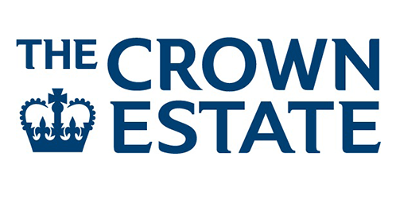London’s Lightermen at D-DAY invasion of Normandy
03/06/2020 | Gustav Milne
London’s Lightermen at D-DAY invasion of Normandy

THAMES AT PEACE: a cluster of Thames lighters lie alongside cargo ships berthed in the enclosed docks, ready to transfer cargoes, as common practice in an era before containerisation.
(steamtugbrent.org)
THAMES AT WAR: Setting off from Tilbury on May 28th 1944, a huge armada of armed merchantmen, naval warships, deep sea ships, coasters, tugs, barges, lighters, oilers and landing craft moved down river to muster in the estuary. This was London’s contribution to the D-Day Invasion fleet: there were 307 ships carrying 50,000 servicemen, 80,000 tons of military supplies and 9,000 vehicles. The Thames was off to war.
A week later, at first light on the morning of 6th June 1944, the world’s largest sea-borne invasion fleet appeared off the Normandy coast: the liberation of Nazi-occupied Europe had begun. There are many well-known images of the Allied troops and tanks storming onto the beaches code-named Utah, Omaha, Gold, Juno and Sword. What is less well-known is the vital role played by Thames lightermen in that historic event. This summary of their involvement incudes the testimony of the remarkable Edwin Hunt. He personally captained a fleet of 16 steel Thames lighters (converted to powered barges), crewed by 120 Thames lightermen, across the Channel to Gold Beach that day. But the full story started long before that historic June morning and continued long after. It has three distinct phases:
1) DECEPTION:1942-3; 2) D-DAY:1944: 3) LIBERATION: October 1944-1945.
Deception: a Second Front?
The deception began in 1942 at a hastily convened meeting in London of Thames lightermen. Between them, they owned or operated some 7,500 engineless ‘dumb’ barges or lighters, used for transhipping cargoes on the Thames and in its enclosed docks. They were now asked to provide the admiralty with 1,200 steel lighters, which would have engines installed and large hinged loading ramps added. This fleet would be berthed in south coast ports to fool German reconnaissance into thinking that a large armada of military landing craft was being assembled for an imminent allied invasion in 1942-3 (see aerial photo below).

https://www.historyonthenet.com/wp-content/uploads/2016/11/H42527.jpg
Once the London lighters had been transformed, an extraordinary charade began. The fleet of lighters superficially repurposed as ‘landing craft’ were regularly moved from port to port on the south coast under full naval escort. These manoeuvres successfully convinced the German High Command that a full-scale allied invasion on the north European coast was imminent. They consequently pulled German divisions back from Russia to reinforce the Channel ports, even though their eastern front was already buckling under pressure from the Red Army’s advances. This bought time and space for our Soviet allies, who dramatically capitalised upon the opening of the fictitious ‘Second Front’, while Britain simultaneously began the long and detailed preparations for the real invasion.
D-Day1944
The charade was so convincing that the War Office then decided that the decoy barges were too good to waste, and had them upgraded for genuine active service, which included fitting them out with 1000hp Thorneycroft engines. This new fleet of some 430 Landing Barges were mainly used to carry vehicles (LBV) and supplies from ship-to-shore, especially big or bulky equipment. The second major use of the converted Thames lighters was to provide the specialist vessels needed to form Supply & Repair (S&R) flotillas, and included Oil (LBO), Water (LBW), Emergency Repair (LBE) in addition to Flak (LBF) and Gun (LBG) Barges.

LBV off Normandy coast image from W.D. Jarman 1997 “Those Wallowing Beauties: Landing Barges in World War II”
There were even floating kitchens (LBK) that were able to store enough supplies to bake 1,000 loaves of bread a day and provide meals for up to 800 men a week, in spite of persistent enemy bombardment.

Landing Barge Kitchen (LBK) with clientele from other support vessels, operating in Normandy 1944 (Wikipedia)
This new fleet providing transportation for motor vehicles, fuel, ammunition and sundry supplies was crewed by some 2,000 members of newly-raised Nos. Three and Four Group Royal Engineers, Inland Waterways Transport (IWT) section. The majority of these IWT ‘troops’ were experienced Thames Watermen and Lightermen. After just four-months training, the men, their barges and their vital cargoes joined forces with the Navy and the Army, and made the 100-mile crossing from the Solent to Normandy overnight on 5-6th June. Working tirelessly to mid October 1944, these powered barges ferried 440,000 tons of supplies directly onto the beaches, as well as some 90,000 vehicles: as Edwin Hunt recalls, ‘everything from tanks to toilet rolls’.

Size of Landing Barges (top) in relation to other D-Day craft (Gordon Smith 2001)
Liberation: Starving Europe 1944-1945 But that was not the end of the war for the Thames lightermen: having demonstrated their dedication and effectiveness under fire on the beaches of Normandy, the IWT found themselves continuing to supply the Allied armies by river and canal, as the troops bitterly fought their way town by town across France and the Low Countries. And those Thames crews were also there at the relief of Rotterdam, a devastated city with no food, no electricity and no fuel, just a civilian population quite literally starving to death. The substantial role that London’s lightermen played in the Second World War is another neglected story well worth retelling and well worth remembering: London’s ‘non-combatants’ operating in the thick of it.
DESTINATIONS IN NORMANDY FOR THAMES LIGHTERS CONVERTED INTO LANDING BARGES (LB*), AND CREWED BY LONDON’S LIGHTERMEN
British Beaches
· GOLD BEACH
25th LBF Flotilla - LBF.1, 3, 6, 7, 12, 13, 14, 15 (bs.39 - 7 not 8 barges)
26th LBF Flotilla - LBF.2, 4, 5, 8, 9, 10 (flotilla barge), 11
4th LBV Flotilla, half for Gold, half for Juno beaches - taken from LBV.17, 36, 41, 58, 60, 91, 125, 139, 169, 183,
215, 224
13th LBV Flotilla - LBV.110, 133, 143, 152, 159, 165, 166, 189, 196, 197, 198, 236 (bs.39 - 8 not 12 barges)
14th LBV Flotilla LBV.144, 162, 163, 164, 179, 185, 188, 194, 213, 217, 222, 227 (bs.39 - 9 not 12 barges).
In September 1944, 14th and 15th flotillas were taken over by the Army’s RASC
15th LBV Flotilla - LBV. 138, 142, 148, 167, 177, 178, 190, 204, 205, 208, 216, 240.
In September 1944, 14th and 15th flotillas were taken over by the Army’s RASC
36th LB (S&R) Flotilla - LBE.18, 23, 38 (11?), 49 (flotilla barge), 50, 51; LBO.9, 14, 17, 23, 39, 53, 55, 73, 75,
80; LBW.10, 17; LBK.4; LCE.23; four attached fuelling trawlers (bs.39 - 1 not 2 LBW).
38th LB (S&R) Flotilla - LBE.3, 5, 13, 14, 24, 48 (flotilla barge); LBO.3, 19, 22, 60, 70, 71, 72, 76, 81, 86;
LBW.11, 19; LBK.1; LCE.24; three attached fuelling trawlers.
· JUNO BEACH
1st LBV Flotilla - LBV.19, 20, 28, 34, 45, 90, 97, 116, 123, 126, 128, 130
2nd LBV Flotilla - LBV.4, 18, 22, 38, 40, 46, 57, 71, 86, 115, 127, 235
3rd LBV Flotilla - LBV.6, 25, 47, 48, 52, 54, 74, 107, 120, 122, 223, 231
4th LBV Flotilla, half for Gold, half for Juno beaches –
taken from LBV.17, 36, 41, 58, 60, 91, 125, 139, 169, 183, 215, 224
30th LB (S&R) Flotilla, part to Juno beach (3 LBE, 4 LBO, 2 LBW), rest to Sword (3 LBE, 6 LBO, 2 LBW, 1 LBK)
taken from LBE.2, 4, 16, 36, 43, 47; LBO.32, 33, 34, 38, 40, 41, 45, 48, 64, 90; LBW.5, 14 plus two?
LBK.10; LCE.15; four fuelling trawlers.
31st LB (S&R) Flotilla - LBE.6, 9, 21, 22, 39, 54; LBO.4, 7, 8, 20, 28, 43, 47, 49, 66, 83; LBW.2, 9;
LBK.9; LCE.16; 4 fuelling trawlers
37th LB (S&R) Flotilla - LBE.15 (flotilla barge), 19, 20, 44, 45, 56; LBO.1, 2, 29, 35, 36, 58, 59, 61, 67, 78;
LBW.3, 16; LBK.2; LCE.19; three fuelling trawlers
· SWORD BEACH
5th LBV Flotilla - LBV.10, 13, 24, 32, 59, 75, 77, 85, 96, 108, 114, 238
6th LBV Flotilla - LBV.1, 43, 44, 88, 99, 111, 117, 119, 135, 199, 200, 201
16th LBV Flotilla - LBV.145, 146, 147, 155, 171, 173, 180, 193, 195, 202, 221, 237
35th LB (S&R) Flotilla - LBE.1, 7, 35, 40, 42, 53; LBO.5, 12, 15, 25, 31, 42, 50, 51, 52, 85; LBW.12, 13;
LBK.6; LCE.13; 3 refuelling trawlers
30th LB (S&R) Flotilla, part to Sword (3 LBE, 6 LBO, 2 LBW, 1 LBK), rest to Juno beach (3 LBE, 4 LBO, 2 LBW) taken from LBE.2, 4, 16, 36, 43, 47; LBO.32, 33, 34, 38, 40, 41, 45, 48, 64, 90; LBW.5, 14 plus two*;
LBK.10; LCE.15; four fuelling trawlers
AMERICAN BEACHES
· UTAH BEACH All flotillas were British-manned
8th LBV Flotilla - LBV.5, 9, 14, 15, 16, 21, 30, 51, 65, 73, 82, 83
19th LBV Flotilla - LBV 29, 31, 35, 50, 63, 72, 87, 113, 118, 121, 137, 174
20th LBV Flotilla - LBV 151, 154, 157, 170, 175, 181, 184, 186, 187, 210, 212, 230
33rd LB (S&R) Flotilla - LBE.12, 30, 32; LBO 13, 21, 24, 26, 77, 79, 82, 92, 95, 96; LBW 6; 1 fuelling trawler
34th LB (S&R) Flotilla LBE.28, 33, 34, 37, 52, 55; LBO 6, 11, 30, 44, 54, 63, 69, 87, 88, 89; LBW 1, 4;
LBK 3, 8; four fuelling trawlers
· OMAHA BEACHAll flotillas were British-manned
7th LBV Flotilla - LBV 3, 11, 23, 53, 67, 70, 76, 101, 153, 206, 214, 225
9th LBV Flotilla - LBV 98, 100, 132, 140, 141, 156, 161, 172, 176, 211, 228, 239
10th LBV Flotilla - LBV 2, 26, 49, 68, 78, 79, 81, 103, 105, 131, 150, 192
11th LBV Flotilla - LBV 8, 27, 61, 69, 84, 89, 95, 104, 106, 124, 191, 232
12th LBV Flotilla - LBV 12, 33, 42, 64, 66, 92, 94, 109, 160, 203, 209, 229
18th LBV Flotilla - LBV 7, 37, 39, 55, 62, 80, 93, 102, 129, 136, 149, 168
32nd LB (S&R) Flotilla - LBE 26, 31, 57, 58, 59, 60; LBO 10, 16, 18, 37, 46, 56, 57, 84, 97; LBW 7, 8;
LBK 5; 4 fuelling trawlers
39th LB (S&R) Flotilla - LBE 8, 10, 17, 25, 27, 29, 41, 46; LBO 27, 68, 93, 98; LBW 15, 18, 20;
LBK 7; nine fuelling trawlers
SOURCES: Edwin Hunt pers comm;
Jarman, W 1997 Those Wallowing Beauties: the story of Landing Barges in World War II
Milne, G 2020 Thames at War: saving London from the Blitz
https://www.naval-history.net/WW2MiscRNLandingBarges.htm








